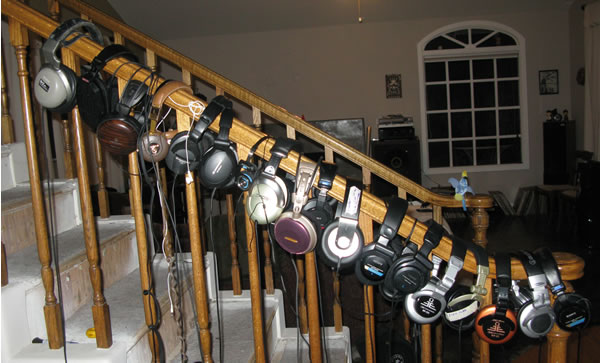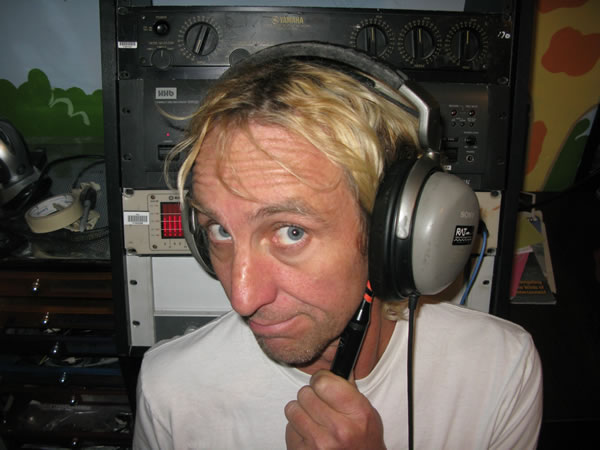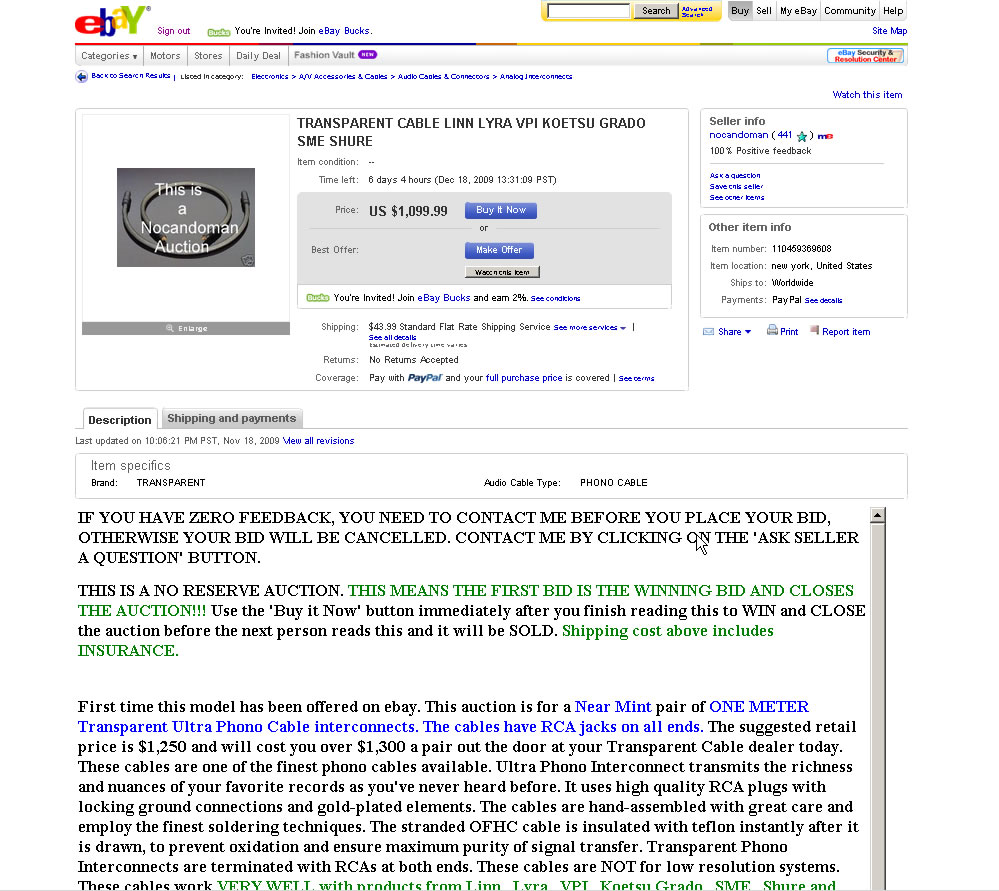The Mighty Headphone Quest Part 3
The listening test. Since the goal here is to find some headphones that are flat and accurate for live engineers to use as a reference point, lets consider a few factors.
1) Most sound live sound consoles have fairly generic headphone amps so for me to test with some fancy headphone amp would not make much sense.
2) These headphones should not be biased toward any particular music type so the type of music should not be relevant other than purely to highlight issues.
3) Hopefully the only aspect that involves my opinion really is the decision to use the CD3000 and the assumption that the CD3000's are a flat and accurate reference. Though with all the testing I have done on speakers over the years and listening and EQ'ing systems to flat, I am quite confident that the CD3000's are a fairly accurate reference point. Or at least the most accurate I have found yet.
So, what I am doing for the listening phase is is purely comparative. Just out of ease and familiarity I am primarily using a record player as the music source and lackluster stereo receiver. I will shoot a pic for next blog post. This allows me to easily replay the same part of a song and the clicks an pops of my old records allows me to hear how the headphones deal with those sharp spike dynamics. I started out with various tracks from Pink Floyd The Wall and Wish You Were Here albums. Today I am using Van Halen's first record. Did ya know that Jamie's crying, you can't have any pudding and you are gonna make it if you try they're gonna love you. I also give them a listen on an iPod where I have been using Ween, Butthole Surfers (good sub lows) and Why Don't You Do Right from the Roger Rabbit soundtrack (Amy Irving vocals). All that said, what I am really finding is that it makes very little difference what I use for music. The boomy headphones are boomy everywhere on everything. The dull phones are dull on everything and so on. Their was one helpful thing I found for sorting them though. I have a few different phono cartridges for my turntable. One is quite dull sounding and another is very crisp and bright. I find that if I use the dull sounding cartridge it really helps me hear variations in the high mid and higher frequencies between various headphones. Whereas with the tonally bright cartridge it is more difficult to discern, as the variations are masked a bit.
So all I do is play a song, put on the CD3000's, then swap to the headphones I am comparing, go back and forth a few times and take some notes. Really simple and the differences are tending to be so readily noticeable and clear cut that it is really a no brainer. As soon as I put them on, boom, these lack lows, boom, these suck the vocals out, boom highs are dull and so on.

Below is the current list of what is on the headphone test plate. Most of these I already have started evaluating while some are still on their way to me. I am not against adding more but having started, I can tell you that unless the headphones that get recommended are extraordinary and sound bright and clear and they have have super smooth low end without boominess, they will not make it very far. So far my testing is showing that many highly regarded favorites have response curves that make them less than optimum as reference headphones. Yes, many of them do sound quite good but I am finding that the pleasing sound comes from either a gently sloping response, a bass boost and/or a notch in the 1K to 5K region. All of which make those headphones non-ideal reference points.
| Model | Disqualifier | Listening notes | Comments | Status |
| AKG 271 MKII | None yet | In transit | ||
| Allen & Heath XONE XD-53 | None yet | In transit | ||
| Apple iPod ear buds | Ear buds | ULF---, LF--, | ||
| Audio Technica ATH W5000 | None yet | ULF-, HF-, UHF- | ||
| Audio Technica ATH AD700 | Open Ear | H-, UHF- | Clear | |
| Audio Technica PRO700 | None yet | LF++, HM-, H- | Rotating ear cups, powerful | |
| Beyer DT770M | None yet | In transit | ||
| Denon AH-D2000 | None yet | In transit | ||
| Equation Audio RP-21 | None yet | Smooth, HM-, UHF+ | Removable straight cable | |
| Equation Audio RP-22X | None yet | Smooth, LF++ | Removable coily cable | |
| Grado SR60i | Open ear | In transit | ||
| Koss ESP-950 | Open ear | ULF- | Tonally Close | |
| Koss MV1 | None yet | MID++ | Cool no tangle coily cable | |
| Koss Portapro | Open Ear | LF+ | ||
| Koss Pro4AAT | None yet | ULF-, HF-, UHF-- | Cool no tangle coily cable | |
| Pickering OA-3 | vintage low-fi | Yuck! | ||
| Sennheiser HD 25-1 II | On ear | In transit | ||
| Sennheiser HD 280 Pro | None yet | HF- | Tonally close | |
| Sennheiser HD 380 Pro | None yet | HM--, HI- | Very smooth, LF clear | |
| Shure SRH-840 | None yet | LF++, UHF- | Removable cable | |
| Sony MDR-7506 | None yet | ULF-, UHF- | Tonally close | |
| Sony MDR-7509HD | None yet | ULF-, M+, H-, UHF- | ||
| Sony MDR-90 | On ear | ULF- | Tonally close | |
| Sony MDR-CD3000 | Discontinued | Ref | Ref | |
| Sony MDR-V6 | None yet | ULF-, UHF- | Tonally close | |
| Sony MDR-V600 | None yet | ULF-, UHF- | Tonally close, harsh | |
| Sony MDR-XB700 | None yet | ULF++, LM+, UHF- | Too much LF | |
| Ultrasone HFI-450 | None yet | In transit | ||
| Ultrasone HFI-780 | None yet | In transit | ||
| Ultrasone PRO 900 | None yet | In transit |
Code:
- ULF - Ultra low Frequencies, like 20 to 40 or so.
- LF - Low frequencies, like 60 to 150 or so.
- LM - Low mid, like 150 to 400 or so
- M - Mids, like 400 to 1000 or so
- HM - High mid, like 1000 to 3000 or so
- H - Highs, like 3000 to 6000 or so
- UHF - Ultra High Frequencies, like 8000 to 20,000
- The more "+" means the more there is. he more "-" means the less there is.
So that is where listening has taken me so far. I also have devised a stupid simple way to get a rough frequency response measurement for comparative purposes that seems to work surprisingly well! I was thinking, how can I measure what my ear hears? I could:
A) Build a dummy head with a fake ear, an ear canal and then spend endless hours refining and testing to see if it is accurate and try and eliminate any issues. I then could go into depth trying to prove the credibility of my measurement method.
Or
B) I could put the headphones on my own humanly head, shove a measurement mic so it pick up the sound right where is goes in my ear and take some actual readings of what is my ear hears.
Hmmm, I am going to roll with the "B" method and see what happens. Plus, plan B is easily repeatable by anyone who has Smaart, and RTA or any other audio measurement system thus allowing anyone to easily check the results of what I measure on their own gear. Cool! So I am going to run this whole deal old school and simple, the way I like it.
But before we move on, in my e-wanderings I found this cool web site:
They have already done frequency response curves on quite a few of the headphones I am looking at and the graphs results somewhat match what I am actually hearing. You can actually pull up and overlay graphs. I spent a while there and compared every headphone they have graphs for to the V6. Cool.
Burn In. A few people have brought up burn-in. Burn-in refers to a phenomenon where the sound of a speaker changes over time and that the stable response characteristic is not reached until a transducer is used for some or many hours. I have no doubt the burn-in effects the response of headphones and speakers. We see it all the time with subwoofers where they become floppy and tune at a lower frequency over time. That said, the typical and logical result of burn-in is a slight lowering of the low end tuning frequency as the mechanical compliance loosens. I can tell you right now, there is nothing slight about the differences between the various headphones I am evaluating. The variations are drastic, huge, monumental and tremendous. Giant 5db multi-octave wide holes and peaks. If a pair of headphones is going to have a shift of octave wide 5 db hole or peak due to burn-in, it deserves to be eliminated anyway. Any cans that are doing well, will keep getting tested and naturally burn-in through testing. So say bye bye to burn-in concerns as a relevant factor in this testing.

So I turn on some pink noise, run it through the CD3000 headphones and slide the measurement mic close to where sound enters my ear and...

This is set on 2db scale so the horizontal lines represent 8 db. So here is the response of the reference CD3000 pair of headphones on my humanly head. Looks like + or - 5 db from 25 to 12.5K. Note, I do not think my mic or other gear is grabbing the frequencies above 12k very well, but that is the least of our worries. And after years and years of using these headphones to finally see their response and have them come up relatively flat was quite exciting. Wait till you see what the other cans look like!
Here are the Sony XB 700's and check out that nearly 3 octave, 12 db deep hole from 315 to 1.6K followed by a 6db/octave roll off. That looks like it will sound like standing outside a car cranking stereo with the doors closed, and it does!

Here is how the iPod earbuds showed up. I could not get the mic between my ear and the bud so I just balanced the bud on the mic. These actually should get more low end when in your ear.

Ooooh, look, fairly flat with a gradual roll off below 100 Hz and a smooth hole centered at 2K. That actually looks like it would sound pretty good.
As far as the accuracy of the measurements? Well, first of all, as I move the mic around it really does not change that much. Secondly, I do spend a bit of time trying to get the best reading I can for each headphones. Thirdly, the variations between the differing headphones are so drastic, that a bit of error in the measurement is a low concern. Finally, it is reassuring to my measurements have some parallels to measurements done by headphone.com but more importantly, the RTA readout really does look like what I am hearing so my confidence is quite high.
OK, enough for now, I have lots more and many surprises to come as I will save the good stuff for later!
Dave Rat
PS, I found this while wandering Ebay looking to buy a pair of Grado headphones to test
OMFG! $1100 for a pair of 3 foot long phono cables! This is a real auction seeking a real moron.
